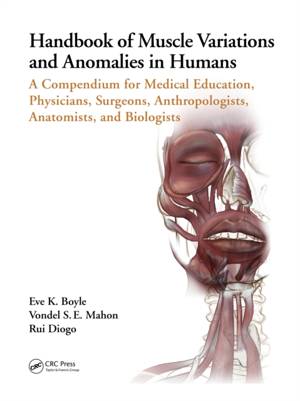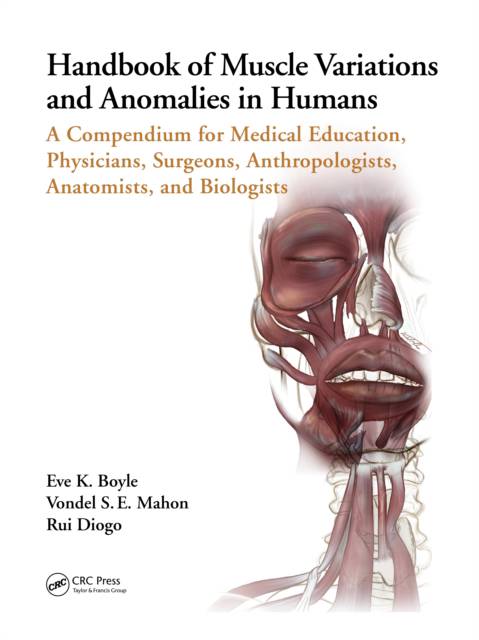
- Afhalen na 1 uur in een winkel met voorraad
- Gratis thuislevering in België vanaf € 30
- Ruim aanbod met 7 miljoen producten
- Afhalen na 1 uur in een winkel met voorraad
- Gratis thuislevering in België vanaf € 30
- Ruim aanbod met 7 miljoen producten
Handbook of Muscle Variations and Anomalies in Humans
A Compendium for Medical Education, Physicians, Surgeons, Anthropologists, Anatomists, and Biologists
Eve K Boyle, Vondel S E Mahon, Rui DiogoOmschrijving
Most textbooks and atlases of human anatomy chronicle only a few cases of muscle variations in the "normal" human population, or of muscle anomalies within congenital malformations. Consequently, there is a misconception of what is considered "normal" human anatomy and what that looks like. Each person within the "normal" population has at least a few muscle variations, and there are millions of individuals born globally each year with muscle anomalies. There are crucial knowledge gaps between what is taught, what students learn, what textbooks and atlases show, and what truly happens in nature and within our species. This handbook fills this gap by: 1) providing a comparative evolutionary context for muscle variations and defects in humans, 2) summarizing the major types of variations and anomalies found in humans, and 3) including didactic figures for a visually engaging learning experience. This book is of interest to students, professors, and researchers in biological anthropology, comparative anatomy, functional morphology, zoology, and evolutionary and developmental biology, as well as to clinicians and practicing health professionals.
Key Features
- Summarizes most recorded variations and anomalies for each muscle in the human body
- Provides information on the comparative anatomy of each muscle, including evolutionary differences from our closest living relatives, the apes
- Includes didactic illustrations of the variations and anomalies for a visually engaging learning experience
- Comprehensively reviews literature to document prevalence information for each variation and anomaly, within humans
Related Titles
Brown, D. E. Human Biological Diversity, 2nd ed. (ISBN 978-1-138-03753-3)
Diogo, R., et al. Understanding Human Anatomy and Pathology: An Evolutionary and Developmental Guide for Medical Students (ISBN 978-1-4987-5384-5)
Diogo, R. Muscles of Chordates: Development, Homologies, and Evolution (ISBN 978-1-138-57116-7)
Specificaties
Betrokkenen
- Auteur(s):
- Uitgeverij:
Inhoud
- Aantal bladzijden:
- 392
- Taal:
- Engels
Eigenschappen
- Productcode (EAN):
- 9780367538620
- Verschijningsdatum:
- 9/03/2022
- Uitvoering:
- Hardcover
- Formaat:
- Genaaid
- Afmetingen:
- 210 mm x 279 mm
- Gewicht:
- 889 g

Alleen bij Standaard Boekhandel
Beoordelingen
We publiceren alleen reviews die voldoen aan de voorwaarden voor reviews. Bekijk onze voorwaarden voor reviews.











